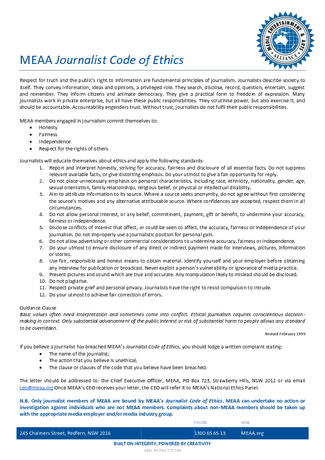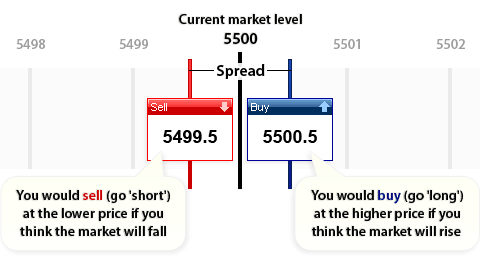Such structured trade is aimed at reducing currency risks and money management risks. With vanilla options you can structure a currency hedging trade without any stop loss and avoid that high volatility movements influence the outcome of your investment decisions. With just two types of options that can be sold or bought and a wide range of strike prices and time horizons the trader with AvaTrade can create an almost infinite number of strategies.
Opendoor Technologies Inc. (NASDAQ:OPEN) Q2 2023 Earnings Call Transcript – Yahoo Finance
Opendoor Technologies Inc. (NASDAQ:OPEN) Q2 2023 Earnings Call Transcript.
Posted: Sat, 05 Aug 2023 11:40:52 GMT [source]
Each options contract represents 100 shares, so 1 call contract costs $500. The investor has $500 in cash, which would allow either the purchase of one call contract or 10 shares of the $50 stock. Imagine that stock in the fictional company Xavier’s Xylophones is trading for $50 per share on May 1st.
More meanings of call option
A short call investor hopes the price of the underlying stock does not rise above the strike price. If it does, the long call investor might exercise the call and create an “assignment.” An assignment can occur on any business day before the expiration date. If it does, the short call investor must sell shares at the exercise price. An order is simply an instruction given to an intermediary, such as a bank or a broker regulated with the AISC, to open or close a trade (buy or sell a security) and eventually reduce currency risk.
Buying calls is a bullish, because the buyer only profits if the price of the shares rises. Conversely, selling call options is a bearish behavior, because the seller profits if the shares do not rise. Call options with a $50 strike price are available for a $5 premium and expire in six months.
A Must-ReadeBook for Traders
When comparing in percentage terms, the stock returns 20 percent while the option returns 100 percent. We’re transparent about how we are able to bring quality content, competitive rates, and useful tools to you by explaining how we make money. The offers that appear on this site are from companies that compensate us.

With a future contract, you have an unlimited loss potential as you are obliged to execute the trade. Investors will consider buying call options if they are bullish about the future price movement of its underlying shares. Call options might provide a more attractive way to speculate on the prospects of a company because of the leverage that they provide. After all, each contract provides the opportunity to buy 100 shares of the company in question. For an investor who is confident that a company’s stock will rise, buying call options can be an attractive way to increase their purchasing power.
Example of a Call Option
For instance, 1 ABC 110 call option gives the owner the right to buy 100 ABC Inc. shares for $110 each (that’s the strike price), regardless of the market price of ABC shares, until the option’s expiration date. If the stock trades below the strike price, the option is out of callable option meaning the money and becomes worthless. Then the option value flatlines, capping the investor’s maximum loss at the initial outlay of $500. Options are a type of financial instrument known as a derivative because their value is derived from another security, or underlying asset.

We believe everyone should be able to make financial decisions with confidence. A robo-advisor is an automated financial advisor that assists investors through an online platform — typically with lower fees than a human financial advisor. New customers need to sign up, get approved, and link their bank account. The cash value of the stock rewards may not be withdrawn for 30 days after the reward is claimed.
Fidelity Smart Money℠
The buyer of a call option is not obligated to exercise the call and execute the purchase. The buyer does still pay the premium even though the call was not executed. The seller, on the other hand, is obligated to sell the security at the specified price upon the buyer’s request. While options can be risky, traders do have ways to use them sensibly. In fact, if they’re used correctly, options can limit risks while still allowing you to still profit from the gain or loss on a stock. Of course, if you still want to try for a home run, options also offer you that opportunity, too.
Call options, in particular, are favoured by many as they provide high capital potential and relatively little risk. You can buy and sell call options through brokerage trading accounts. Investors may also combine buying and selling different call options simultaneously, creating a call spread. These will cap both the potential profit and loss from the strategy but are more risk-averse and cost-effective in some cases than a single call option.
A naked call option occurs when you sell a call option without owning the underlying asset. If the buyer exercises the option, you have to buy the asset at the market price to satisfy the order. If the price is higher than the strike price, you will lose the difference minus the fee you paid. A call owner profits when the premium paid is less than the difference between the stock price and the strike price at expiration. For example, imagine a trader bought a call for $0.50 with a strike price of $20, and the stock is $23 at expiration.
The buyer of a call option seeks to make a profit if and when the price of the underlying asset increases to a price higher than the option strike price. Call options are a type of derivative contract that gives the holder the right but not the obligation to purchase a specified number of shares at a predetermined price, known as the “strike price” of the option. If the market price of the stock rises above the option’s strike price, the option holder can exercise the option, buying at the strike price and selling at the higher market price in order to lock in a profit.
However, if you find the same item at another grocery store for cheaper, you probably won’t use the coupon. Another thing that traders should be aware of is that the overall value of a call option depends on whether it is “in the money” or “out of the money”. Bankrate.com is an independent, advertising-supported publisher and comparison service. We are compensated in exchange for placement of sponsored products and, services, or by you clicking on certain links posted on our site. Therefore, this compensation may impact how, where and in what order products appear within listing categories, except where prohibited by law for our mortgage, home equity and other home lending products. Other factors, such as our own proprietary website rules and whether a product is offered in your area or at your self-selected credit score range can also impact how and where products appear on this site.

Calls with a strike price of $50 can be sold for a $5 premium and expire in six months. In total, one call contract sells for $500 ($5 premium x 100 shares). If the stock stays at the strike price or dips below it, the call option usually will not be exercised, and the call seller keeps the entire premium. But on rare occasions, the call buyer still might decide to exercise the option, so the stock would have to be delivered. This situation benefits the call seller, though, since the stock would be cheaper than the strike price being paid for it.
However, you won’t be able to multiply your money in the same way as a call buyer. “Exercising a long call” means the call option owner is demanding to buy the stock from the call seller. Upon exercise of a call, shares are deposited into your account and cash to pay for the shares and commission is withdrawn (just like a normal stock purchase). A call option is a contract between a buyer and a seller to purchase a certain stock at a certain price up until a defined expiration date. The buyer of a call has the right, not the obligation, to exercise the call and purchase the stocks.
How We Make Money
NerdWallet, Inc. is an independent publisher and comparison service, not an investment advisor. Its articles, interactive tools and other content are provided to you for free, as self-help tools and for informational purposes only. NerdWallet does not and cannot guarantee the accuracy or applicability of any information in regard to your individual circumstances. Examples are hypothetical, and we encourage you to seek personalized advice from qualified professionals regarding specific investment issues.
The strike price ultimately determines whether an option has intrinsic value. While you may also make a profitable trade by selling the option contract, for the purpose of this article, we will consider only call options where the buyer either exercises or lets the options expire. If the stock doesn’t rise above $115, you keep the shares and the $37 in premium income. Options often are seen as risky, but they can also be used to limit risk or hedge a position. Both strategies have a similar payoff, but the call limits potential losses. At most, call sellers can receive the contract premium — $500 — but they have to be able to deliver the stock at the strike price if the stock is called by the buyer.
- A call option is a contract to buy an underlying asset — not the asset itself.
- So, if XYZ goes out of business and the stock goes to $0, you will have potentially lost $5,700 on the entire investment.
- The strike price ultimately determines whether an option has intrinsic value.
- She then sells the shares on the open market for $18,000, pocketing a profit of $3,000.
- Call options are a type of derivative contract that gives the holder the right but not the obligation to purchase a specified number of shares at a predetermined price, known as the “strike price” of the option.
“When an investor buys an option the most they can lose is what they paid for the option. When someone sells an option they have a virtually unlimited liability if the price of the asset moves against them.” A call option is a financial arrangement under which an investor has the right, but not the obligation, to buy an asset at a predetermined price within a specific range of dates. An investor only exercises a call option when doing so will result in the acquisition of an asset at a price below its current market price, so that the investor can then sell the asset for a profit.